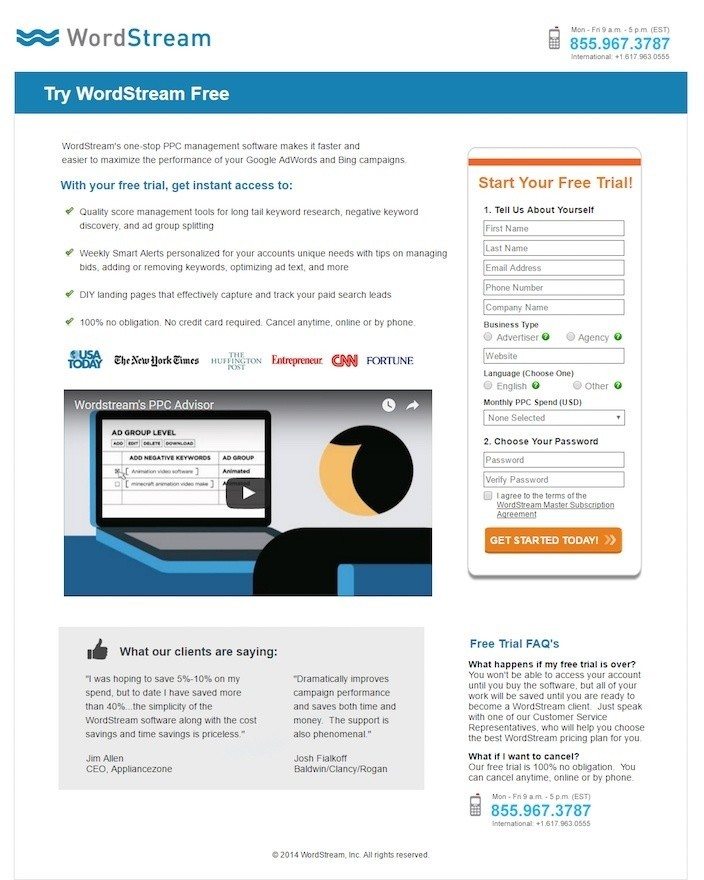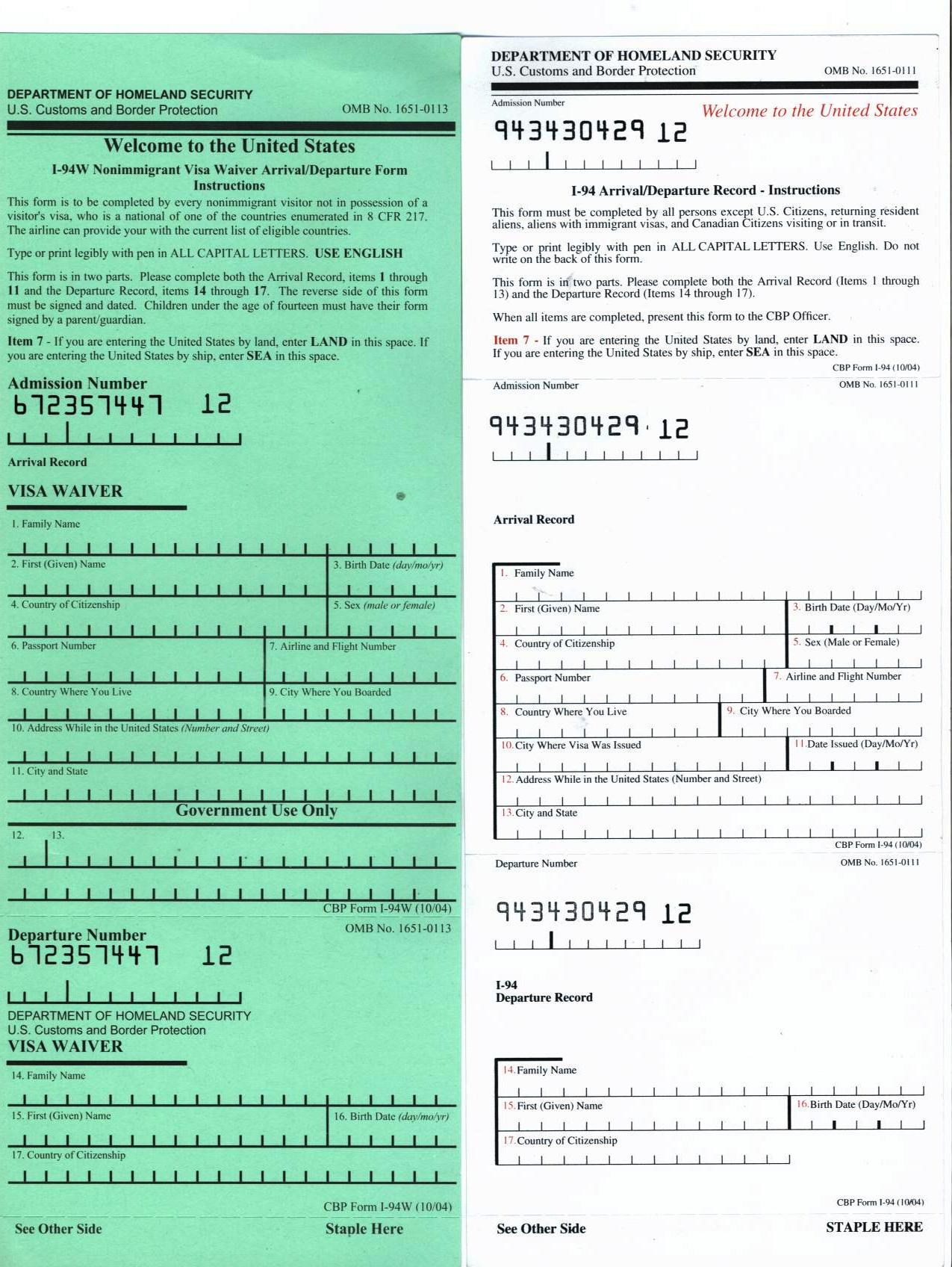Us Landing Card
Aug 27, 2015 - Arrival to USA. Unless you hold a passport from Canada or Bermuda, before you arrive in the U.S. You must fill out an immigration form.

An arrival card, also known as an incoming passenger card, landing card or disembarkation card, is a legal document used by immigration authorities of many countries to obtain information about incoming passenger not provided by the passenger's passport (such as health, criminal record, where they will be staying, purpose of the visit, etc.) and to provide a record of a person's entry into the country.[1][2][3][4][1] The card may also provide information on health and character requirements for non-citizens entering the country.[5] Some countries require an arrival card for each incoming passenger, while others require one card per family unit, and some only require an arrival card for non-citizens only.
Some countries, such as Singapore and Thailand, attach a departure card to the arrival card, which is retained in the alien's passport until their eventual departure. The arrival card can also be combined with a customs declaration, which some countries require incoming passengers to fill out separately.
Some countries, such as Malaysia,[6] do not require an arrival or departure card. The procedure of compiling information from immigration cards is no longer required by United States authorities following the introduction of the biometric recording system by the United States Customs and Border Protection.[3][7] There is minimal cross-border formality between a number of countries, most notably those in the passport-free travel area of Europe's Schengen Zone.[8]
The requirement to produce an arrival card is usually in addition to provision of a passport or other travel document, and sometimes a customs declaration.

Information on the card itself[edit]
The information requested varies by country. Typically the information requested on the arrival card includes:

- Full name
- Nationality
- Date of birth
- Passport number, place of issuance and expiration date
- Flight number or name of aircraft, ship or vehicle
- Purpose of trip: vacation, education/study, visiting relatives/families, business, diplomatic
- Duration of stay
- Destination (next stop of disembarkation)
- Address in country
- Information on items being bought into the country which may be of interest to customs and quarantine authorities
Travellers are generally required to sign, date, and declare the information is true, correct, and complete.
United Kingdom[edit]
Non-EEA citizens were formerly required to complete a landing card on entry to the United Kingdom. The traveller was required to present the completed form at the UK Visas and Immigration desk at the point of entry. The form was usually supplied by the airline, train or ferry company.[9]
In the UK, the landing card system was governed by the Immigration Act 1971, schedule 2 paragraph 5, which states;[10]
| “ | The Secretary of State may by order made by statutory instrument make provision for requiring passengers disembarking or embarking in the United Kingdom, or any class of such passengers, to produce to an immigration officer, if so required, landing or embarkation cards in such form as the Secretary of State may direct, and for requiring the owners or agents of ships and aircraft to supply such cards to those passengers. | ” |
[11][12][13]
In August 2017, the UK Home Office announced that landing cards will be completely scrapped as part of digital border transformation and modernisation. It was expected this change would come into effect by the autumn.[14] Landing cards were abolished for all passengers effective 20 May 2019.[15]
Notably absent from the landing card was information on the purpose of the trip, destination, or any items brought into the country. Additional information requested from travellers was their occupation and the port of their last departure.[16][17][18]
See also[edit]
References[edit]
- ^ abPassenger Cards. Department of Immigration and Citizenship. Australian Government.
- ^cbp.gov, What to DeclareArchived 2016-09-15 at the Wayback Machine
- ^ ab'U.S. Customs and Border Protection Declaration Form 6059B, CBP Issues New Customs Declarations Form, Features Expanded Definition of Family Members'. Archived from the original on 2016-09-15. Retrieved 2016-08-31.
- ^NZIS431 - New Zealand Passenger Departure CardArchived 2008-10-15 at the Wayback Machine. Statistics New Zealand.
- ^NZIS431 - New Zealand Passenger Departure Card. Statistics New Zealand.
- ^Malaysia no longer require immigration cards
- ^cbp.gov, US Citizens
- ^per Article 21 of the Schengen Borders Code (OJ L 105, 13 April 2006, p. 1).
- ^UK, gov.uk, Entering the UK
- ^International scholarship guide, 7 Things to do before your planes lands and once you alight at a UK International Airport
- ^Children & ImmigrationBy Jeremy Rosenblatt, Ian Lewis, page 88
- ^Immigration Law Handbook, 2013,By Margaret Phelan, James Gillespie, page 50
- ^parliament.uk, Nationality, Immigration and Asylum Bill, 172.6
- ^Outdated landing cards to be withdrawn as part of digital border transformation
- ^'UK to scrap passenger landing cards'. BBC News. Retrieved 16 May 2019.
- ^UK Landing Card, pic
- ^UK Landing Card, pic
- ^go2london.co.uk, Do you need a Visa to go to London?
- Immigration and passports
Expanded use of eGates - seven countries added
The UK Government has expanded the use of eGates at Heathrow to nationals of Australia, Canada, Japan, New Zealand, Singapore, South Korea and the United States of America. the majority of nationals from these seven countries will be eligible to use eGates and won't need to complete a landing card. Find out more about eGates.
Unless you are catching a connecting flight, your first stop after arrival will be passport control. Please note if you are arriving In Terminal 5B and Terminal 5C, you will need to take the transit train.
What to do at the border
There are two queues at passport control – one for British, European Union (EU), European Economic Area (EEA), Swiss, American, Australia, Canada, Japan, New Zealand, Singapore, South Korea nationals and a second for all other nationalities.
At the passport desk a Border Force officer will ask to see your passport or travel document and any supporting documentation necessary for your visit. Your passport must be valid for the whole of your stay.
For information about entry requirements into the United Kingdom, visit the Border Force website.
With tougher checks now in place at the border, you may have to wait a little longer to get into the United Kingdom, especially at peak times.
eGates – arrivals made easy
Automated eGates offer an alternative to conventional passport checks.
Simply scan your e-passport at the barrier. The system runs a face-recognition check against the chip in your passport, then if you're eligible to enter the UK the gate opens automatically – all in a matter of seconds.
You need to be over 12 and have an e-passport (look for the 'chip' logo on the front) issued by a country in the European Economic Area* and the following additional countries: Australia, Canada, Japan, New Zealand, Singapore, South Korea, Switzerland and the United States of America.;
Border Force's Registered Traveller service
Registered Traveller is a membership service which offers faster and more convenient entry at passport control for frequent travellers to Heathrow. At passport control, you’ll be able to use the eGates (if you have a biometric passport) and the UK/EU channel.
Up to 40 countries have signed up to the scheme and the latest list of eligible passports is available at gov.uk.
Stopovers in Britain
There is nowhere to sleep in the airport. If your booking includes a stopover in a local hotel, follow Arrivals and leave the airport via passport control, baggage reclaim and Customs, then check in as normal when it's time to continue your journey. Your travel documents must allow you entry into the UK.
You can apply for a 24-hour visa on arrival. These are granted at the discretion of the Immigration Officer, who must be satisfied that you have a confirmed booking of onward travel within 24 hours.
Us Landing Card Sample
* The European Union and European Economic Area
EU countries: Austria, Belgium, Bulgaria, Croatia, Cyprus, Czech Republic, Denmark, Estonia, Finland, France, Germany, Greece, Hungary, Iceland, Irish Republic, Italy, Latvia, Liechtenstein, Lithuania, Luxembourg, Malta, Netherlands, Norway, Poland, Portugal, Romania, Slovakia, Slovenia, Spain, Sweden and United Kingdom.
Iceland, Liechtenstein, Switzerland and Norway are not members of the European Union (EU) but citizens of these countries have the same rights to enter, live in and work in the United Kingdom as EU citizens.
Back to topAirport hotels
Compare popular hotels around Heathrow and book hotel-plus-parking packages.
